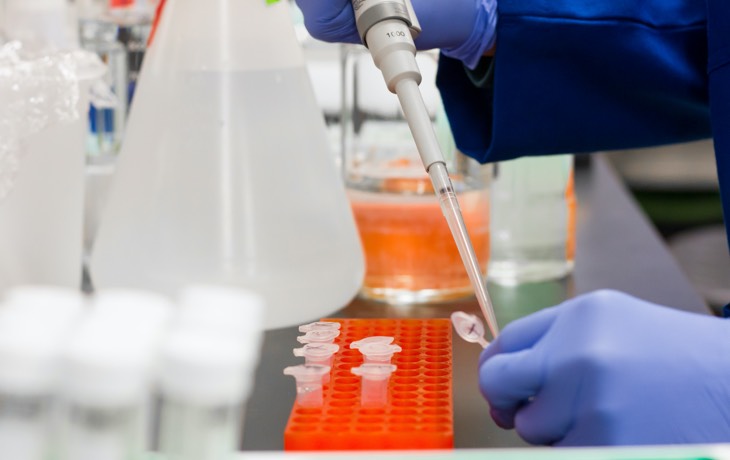This guest post was written by Margit Burmeister, a Professor of Neuroscience, Genetics, and Computational Medicine and Bioinformatics at the University of Michigan.
Last month, one of my former students, Ari Allyn-Feuer, described three possible scenarios of for the ending of the coronavirus pandemic.
- Like SARS, we might manage to put the virus completely to rest.
- Therapies and public health could keep it in check until from 150,000 to 7 million people die.
- What Ari calls “the big burn,” where 70 percent of the world gets infected, and he predicts 150 Million people die.
Now that we’ve spent the past month watching data and science develop, it’s time to look again into the future.
The past month has brought us a mix of both bad and good news. We now know that COVID-19 will kill less people than the Spanish Flu did in 1918. That’s good news. The bad news is that it seems this will never really be “over.” We’re in this for the long haul.
Spread is expected to continue
In the past month, the virus has been working its way around the world. It has now reached the African continent, though previous hotspots were mostly in Europe, Asia, and the Americas.
If we look at the graphs provided by Africa CDC, Africa’s infection rate appears to be steeper than Europe’s, despite it being a hotter continent. The current trend worldwide does however seem to be that the hottest areas may be somewhat less affected.
Wuhan, China, the region where the pandemic appears to have originated, just recently returned to normal after months of extremely stringent stay-at-home policies. This came shortly after Beijing and other Chinese cities had loosened their restrictions.
The re-opening of Wuhan occurred 76 days after the lockdown began, and after the city reported three full weeks of near-zero new cases. Some businesses had already re-opened by this time, but now people flocked to tourist sites.
Now, new flare-ups in China seem likely. With the virus spreading to every corner of the globe, it seems likely that pockets of infections will appear in each corner of the Earth.
More people than we know have already been infected
Isn’t the world’s total case count somewhere around 2 million? Yes, but in most countries, with the exception of China, Germany and South Korea, tests haven’t been issued for a majority of suspected cases. That means the true number of cases could be significantly higher.
In the US—and this happened at Italy’s peak, too—you don’t end up in the hospital if you have mild to fairly severe symptoms of COVID-19. Instead, when you enter your symptoms into a website or call a nurse, you’ll most likely get advice to stay home, rest, keep hydrated, use Tylenol if high fever, and call again if you have breathing difficulties or have a very high fever. It’s the breathing difficulties and fever that would lead to testing and hospital admission.
The data also suggests that the number of asymptomatic cases could be higher than estimated. China never counted asymptomatic cases among its cases. And in a recent British Medical Journal paper, researchers suggest that in China, 80% of cases may have been asymptomatic.
When all passengers of the Diamond princess were tested in Japan, half of those with positive results were asymptomatic. Similarly, 60% of positives on a recent cruise were asymptomatic.
Perhaps even more staggering, a recent report from Santa Clara suggests that 50 times the people thought to be infected could have antibodies. It’s possible, then, that two to four percent of the population has already been exposed to COVID-19, much more than the current number of known cases.
In the hardest-hit towns, 30 percent of residents tested positive for antibodies. For herd immunity, 30 to 70 percent of the population must have antibodies. So if these findings can scale up, we’re already nearly there in some parts of the United States.
So what is the true number of cases in the US, and in the world? Most estimates state that 80 percent of symptomatic cases are mild to moderate, about 15 to 20 percent of recognized cases require hospitalization. The slow testing in the US means that largely only this 15 percent of more severe cases get tested. The actual number of cases, including those with any symptoms, may be five to six times the current estimates.
If we assume that asymptomatic cases come in at two to three times that number, then at least 10 million Americans have been infected. That would mean three percent of the United States population has been exposed—not so far from the Santa Clara estimate.
It seems the virus has infected two to four percent of the population at large, but in hard hit areas like Detroit, NYC and Chelsea, Mass, as many as 30 percent. While that might not be enough for full immunity, it does mean that a second, higher wave or peak in those areas is unlikely—even if we ease restrictions.
Not all the news is good news
Boris Johnson once thought that the UK should just have everyone get the virus and get it over with. This kind of talk assumes, implicitly, that COVID-19 is like mumps or measles. Once you’ve had it, you must be done. You’ll never get it again.
That’s the same logic people use when they hope for vaccines. But not all vaccines are equal. There is no vaccine against the common cold, which is also a coronavirus. For the seasonal flu, scientists have to mix a vaccine each year. Even then, it’s possible to get the same strain of the flu more than once.
Everyone seems to be betting on the hope that with a vaccine next year, all this will soon be over. But one very new study from China suggests that 30 percent of patients who tested positive for COVID-19 ended up with little to no antibodies.
Having or not having antibodies did not correlate with the severity of the disease. Sure, 70 percent of these people did have antibodies. But this study gives credence to the numerous reports of patients who might test positive for COVID-19 and then test negative twice. Then these patients might get sick again and test positive. It also makes it more likely that a vaccine will be more like a flu vaccine, effective for only a certain percentage of individuals. How long immunity will last—if it can even be achieved at all—can’t be guessed based on these data.
How deadly really is COVID-19?
If we divide the number of COVID-19 related deaths by the number of cases, the fatality rate could be anywhere between 0.3 and 12 percent. The number depends on the country and the time it is calculated.
Hence, in countries like the US and Italy, which at peak infection tested only severe cases, the fatality rate is probably much higher. On the other hand, Germany beginning of April showed a calculated fatality rate of only 0.3 percent. By now, that rate has caught up to somewhere between one and two percent. The difference came from people who had been infected at the peak and but had not yet died.
The data from the Chinese CDC via NPR show how case fatality changed over time. Even if we don’t completely trust the data from China, it seems pretty obvious that when the health care system can take great care of a few cases, fewer of those infected will die.
Most estimates state that 80 percent of symptomatic cases are mild to moderate. Just 20 percent of recognized cases require hospitalization, and about half of these severe cases require ICU, and again half of those will not survive.
With those numbers in mind, the fatality rate for most countries is probably around five percent.
But if it’s true that many people, between twice to 50 times as many, already have been infected (i.e. if we assume the US already has 10 million people infected) then it may be as low as one percent or less. Still, that fatality rate would be ten times worse than the seasonal flu. But it is already clear that mortality is lower than calculated. Not that this is based on asymptomatic cases. So once you have symptoms, you need to assume you are in the three to five percent fatality rate bracket.
How will we reduce that number in the future?
Doctors will get better with experience. For example, for patients with respiratory problems, the prone position, which places patients on the stomach rather than the back, seemed to make a difference. But in the earliest cases, patients were never put in the now standard prone position.
There are very promising leaked reports that one of the anti-viral drugs, remdesivir, seems to help patients. There are hundreds of clinical trials on the way on numerous sites, so we will figure out not only which anti-viral drugs work, but also whether Ibuprofen is good or bad (evidence on both sides), or which other medications may interact.
This progress in medicine will surely continue. And that doesn’t just mean we should all be waiting for a perhaps not so effective vaccine. That means it’s worth waiting at home and avoiding being among the first wave of infections.
While we have no idea by how much, it is safe to assume that COVID-19 mortality in the future will be further reduced much below the current one percent estimate above, even without a vaccine.
The endgame: 2021-2025
How much SARS-CoV2 clearly affects a person is extremely variable—and it could range from COVID19 developing into deadly pneumonia to no apparent effect at all. We will soon know better how to predict each individual’s risk from their genetics, pre-existing conditions, such as diabetes, obesity, heart conditions and hypertension, maybe prior BCG vaccination, maybe blood groups and many still unknown factors.
Although this is not the regular flu, COVID-19 will likely remain with us. Eventually, half of us will get it, maybe many of us have already had it, and many may get it even more than once. It may flare up in the winter.
So the messy future is: While it could be less deadly, because some of us are vulnerable, we will change our lives accordingly. Most of us will get it, get over it, and get annual shots.
Travel to other countries and taking cruises may never be the same—particularly for those with age and other risk factors. Your risk of getting infected will be part of the consideration.
Social customs will change. Going to a big party in winter always carried the risk of catching a cold or the flu, but the risk just wasn’t high enough to make it part of the consideration. Now it will be for many.
Nursing homes will need to learn to be much better at infection control. Now we know that they are nests of high risk individuals.
My representative, Debbie Dingell, also predicted that the hand shake may never come back—to greet, we will nod heads, put our hands over our heart, or put palms together, Namaste, in memory of having overcome this pandemic that has and will change humankind forever.


You are reporting the comment """ by on